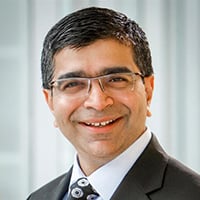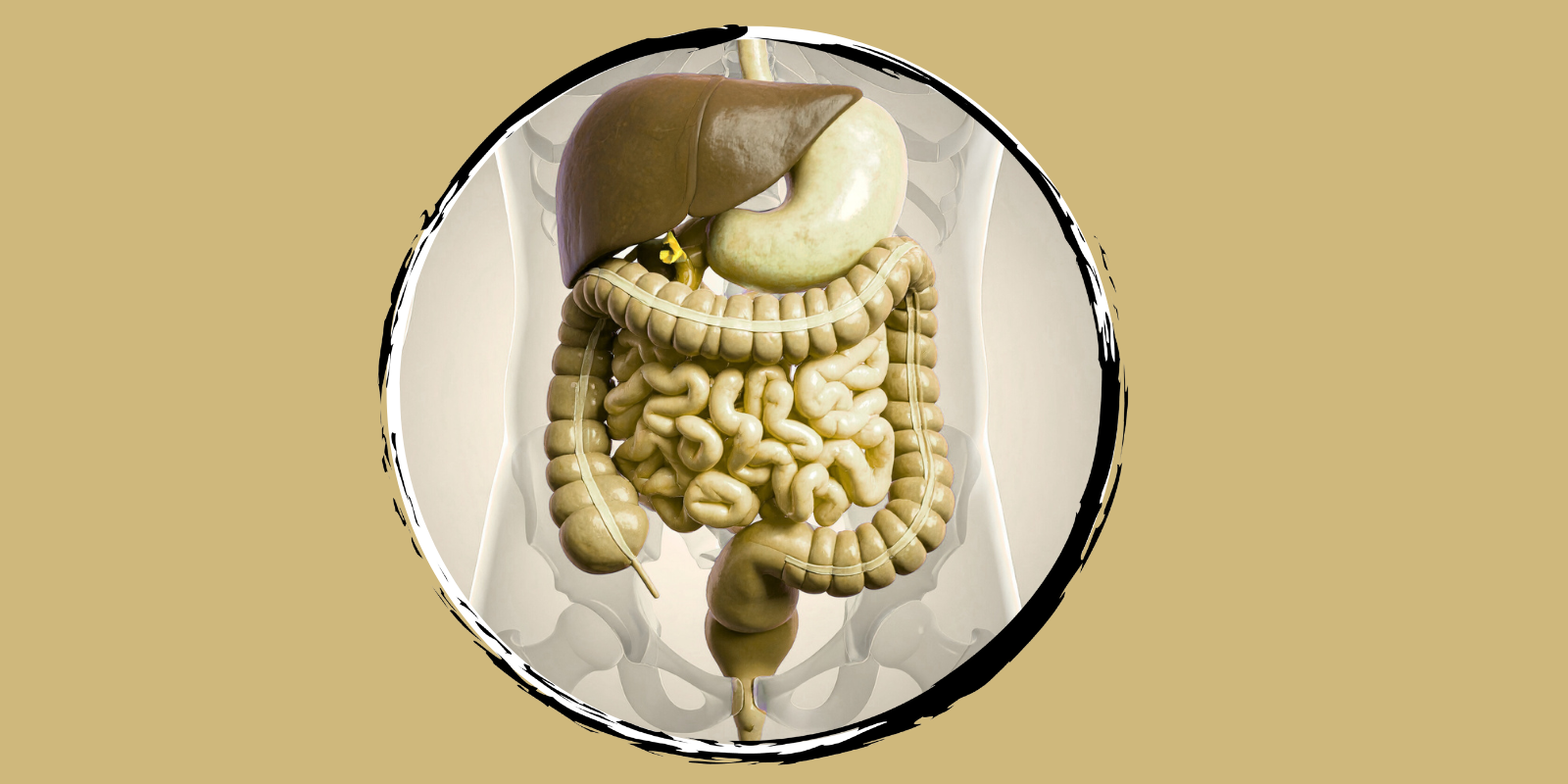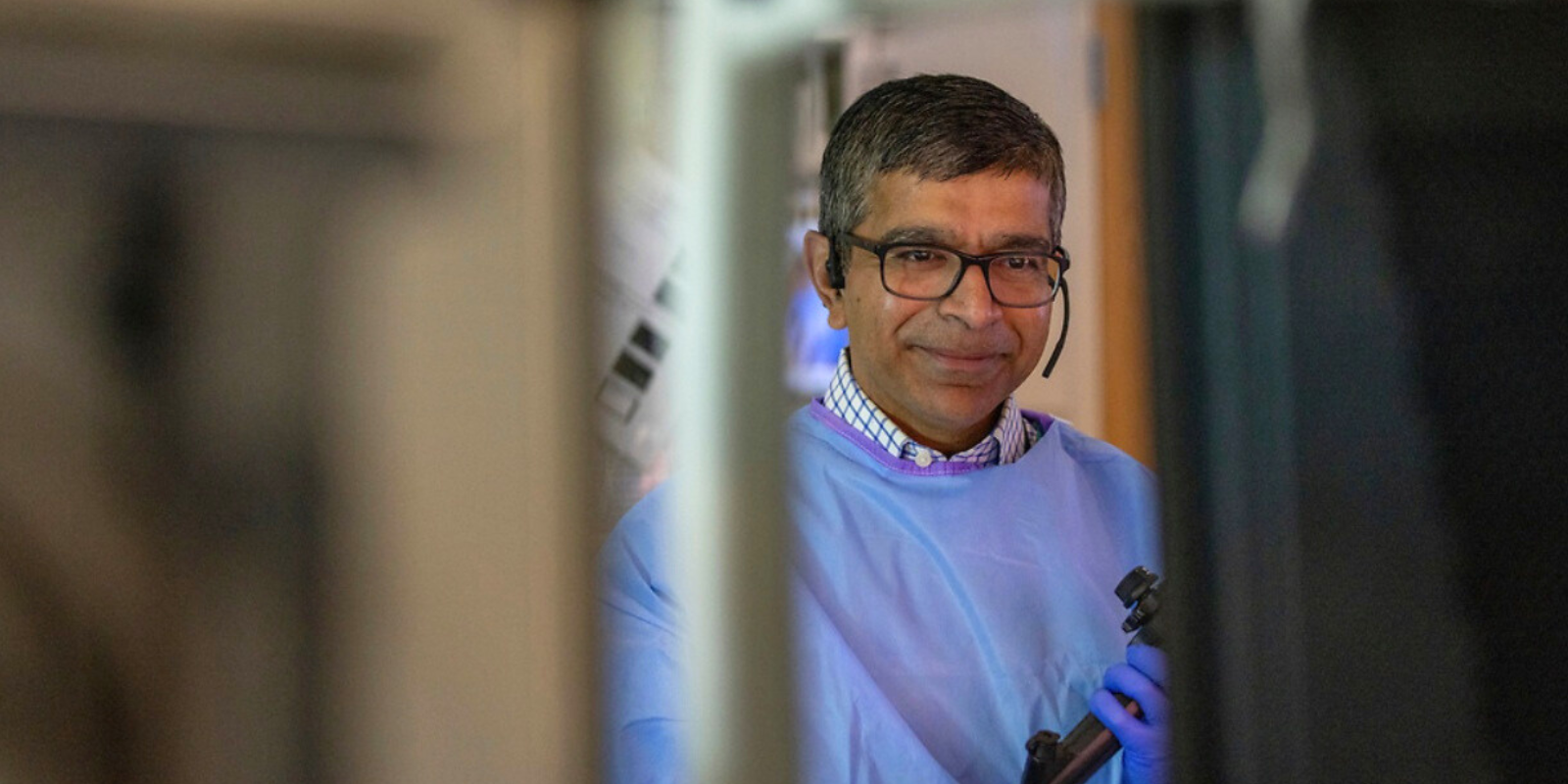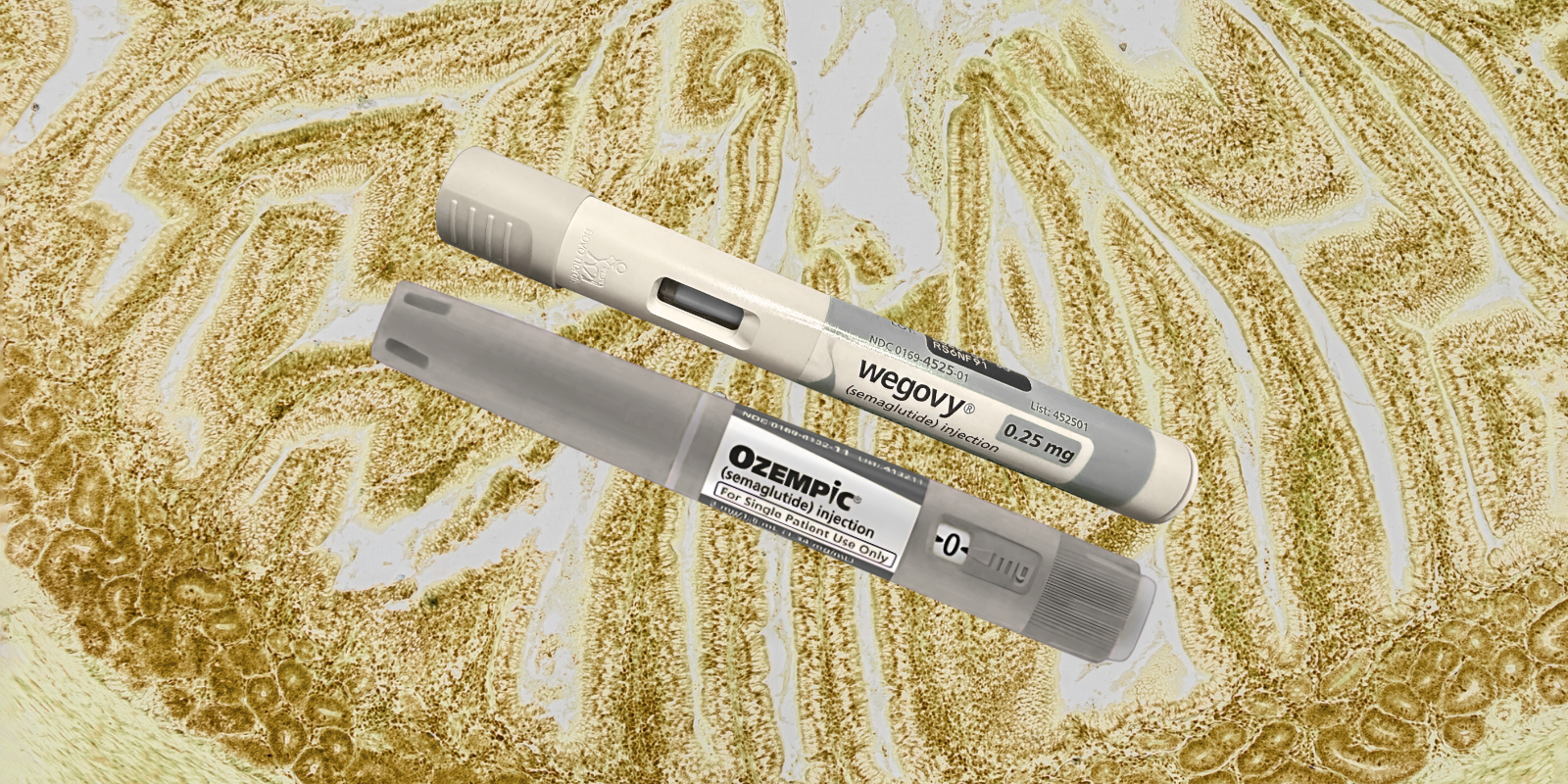Living with an external feeding tube and another tube in his neck to help him breathe?
That wasn’t going to work for Vic Padilla, a 72-year-old builder of racing motorcycles and custom hot rods. He had too many things left to do, too many racetracks left unconquered.
“I have a wife of 50 years, and I have a daughter and a son and seven grandchildren,” Padilla says. “They all live right by me, and I'm all about living.”
 Padilla, second from right, with members of his racing team.
Padilla, second from right, with members of his racing team.
That’s why, when Padilla finally started going to doctors about the trouble he was having eating and swallowing, he didn’t stop until he found University of Colorado Cancer Center member Sachin Wani, MD, the executive director of the Katy O. and Paul M. Esophageal and Gastric Center of Excellence. Wani presented him with the diagnosis of Barrett’s esophagus, a precancerous condition in which long-term, untreated acid reflux causes damage to the esophageal lining, that had progressed to Barrett’s esophagus with high-grade dysplasia and complicated by extensive scarring that resulted in difficulty swallowing (esophageal stricture).
“I think he’s the sixth physician I visited about this,” Padilla says, “and he was the only one who had the self-confidence to know he could go in and treat it, rather than just go in and remove it by major surgery.”
Reflux-related problem
Padilla had had acid reflux issues for years — he slept in a special adjustable bed to keep it under control — but when he almost choked to death while eating his favorite meal of chicken fingers and boiled potatoes in 2020, he knew it was time to get help. Endoscopies revealed severe damage to his esophagus from years of acid reflux, which caused areas of severe narrowing called strictures, and he was referred to Wani in November 2020.
“We saw Vic in our multidisciplinary clinic, where we take a patient-centered approach, and we discussed the risks and benefits of two strategies,” Wani says. “Given the complexity of his case and the fact that he had strictures, we gave him the choice between an esophagectomy, which is a major surgery, or continuing on the path of endoscopic eradication therapies.”
Padilla chose the endoscopic route, which resulted in the removal of a large area of his esophageal lining being removed (resected) by a procedure called endoscopic mucosal resection; all performed during endoscopy. The remaining areas of Barrett’s esophagus were subsequently burned using a technique called radiofrequency ablation or frozen off using a technique called cryotherapy that utilizes liquid nitrogen. After several months of treatment, all traces of the condition were gone.
“When Dr. Wani first got all the pictures of my esophagus, he said, ‘You know what? I think I can help you,’” Padilla remembers. “You don’t know the weight that was taken off my heart. I love my grandchildren. I’m their mechanic, and I see them a lot. So I’m not ready to go. People say, ‘I’m ready to go to heaven to meet my maker.’ Well, I’m not ready right now.”
Life after Barrett’s
Padilla can now eat and swallow normally, a far cry from the yearlong period when he couldn’t eat solid food and subsisted on broth, popsicles, and ice cream. He enjoys the occasional cheeseburger — one of his other favorite foods — and he sees Wani annually to check for signs that the Barrett’s esophagus is returning. Suspicious spots are treated with liquid nitrogen in a treatment called cryotherapy.
“When I build custom hot rods, I’m doing something other people can't do,” he says. “So I don’t just push them out the door and let them go; I bring the car back in, put it up on my lift, and give it a thorough going-over again. I built it, so I want to see if anything is going wrong. That’s exactly how I look at Dr. Wani and what he does when I go in for checkups.”
 Padilla with one of his grandchildren.
Padilla with one of his grandchildren.
Given that he preserved Padilla’s quality of life when so many other surgeons didn’t seem to be able to, Wani has quickly become one of Padilla’s favorite people.
“There’s nothing I would not do for Dr. Wani,” he says. “If he called me in the middle of the night and told me his car has a flat, I would get out of bed and I would go change it for him. If he called me and said he couldn’t get out of his driveway because of snow, I would load up my skid steer and I would go get him out. There's nothing I would not do for Dr. Wani. I absolutely admire and love him.”
His favorite memory of Dr. Wani? The day he told him he had no signs of esophageal cancer.
“I felt like I did the day my daughter was born,” Padilla says. “I felt very blessed. I told my neighbors, ‘You have to put up with me for another 26 years, because I’m not going anywhere.’”




